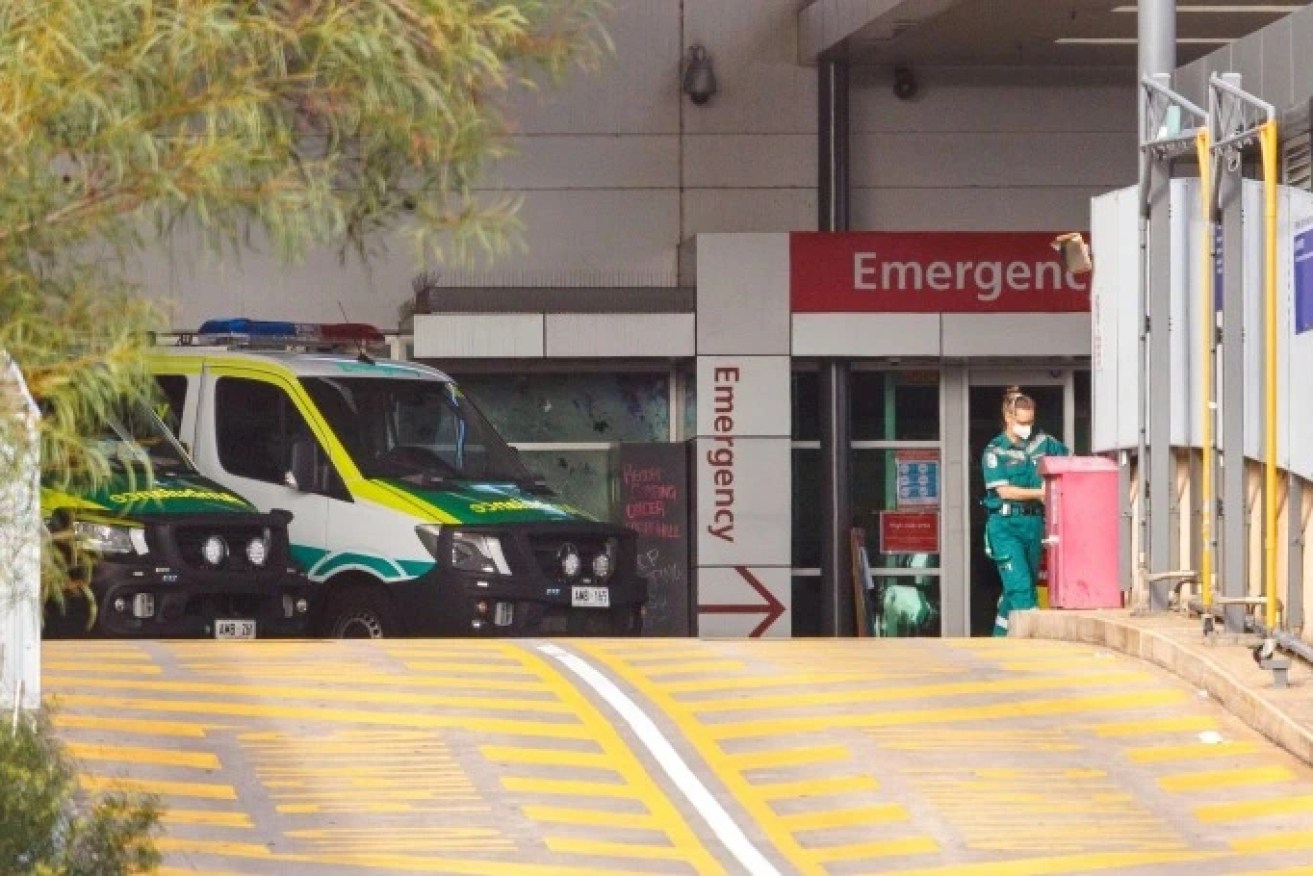Study quantifies COVID-19 impact on mortality
A comprehensive analysis of the impact of COVID-19 on fatality rates has found there were 15,400 “excess deaths” across Australia in the first eight months of 2022, or 13 per cent more than predicted.

Ambulances at Flinders Medical Centre in Adelaide. Photo: Tony Lewis/InDaily
The measure captures not only confirmed virus deaths but those incorrectly diagnosed and reported, and those from other causes attributable to the crisis such as health systems being overwhelmed, resources being diverted or fewer people seeking treatment.
The Actuaries Institute’s COVID-19 Mortality Working Group estimates 8200 of the fatalities were directly due to the virus, with another 2100 having it as a contributory cause and the remaining 5100 featuring no link.
The deaths peaked in the last week of July and fell across August.
Spokeswoman for the group Karen Cutter said all jurisdictions except the Northern Territory had “significant levels of excess mortality in 2022”.
“Generally, about half of this was due to deaths from COVID-19, with the exception of Tasmania that had relatively fewer deaths from COVID-19 and more deaths from other causes.”
She said a lower-measured excess mortality for WA reflected the later introduction of the virus there compared with the eastern states.
With its relatively young and affluent population, the ACT experienced lower excess mortality than the larger states while the NT, also with a very young population, showed a low net impact.
The data for South Australia shows there were 800 excess deaths in the first 30 weeks of this year – a 10 per cent increase in what would have been expected. Of these, 457 were attributed to COVID alone.
The Working Group said it was notable there were excess deaths in almost all age bands.
While the number and percentage of excess deaths were higher in older Australians, they were notable in all age groups and generally higher for females.
COVID-19 disruptions have meanwhile been blamed for the lowest number of public elective surgeries performed in over a decade.
The number of patients treated over the past financial year on non-emergency waiting lists fell to the lowest since 2010-11, according to data released by the Australian Institute of Health and Welfare.
AIHW spokesman Dr Adrian Webster said public hospitals performed 623,000 elective surgeries in 2021-22, or 17 per cent fewer compared to the previous year.
‘This followed periodic suspensions of lower-urgency elective surgery starting from March 2020, which have aimed to help ensure the health system maintains adequate capacity during the pandemic,” he said.
A reduction in elective surgery admissions was felt Australia-wide with the exception of Tasmania.
The largest decreases were in NSW (27 per cent) and Western Australia (23 per cent), while Victoria experienced a much longer period of reduced activity due to extensive virus lockdowns.
The latest South Australian COVID data will be released this afternoon.
– with AAP




